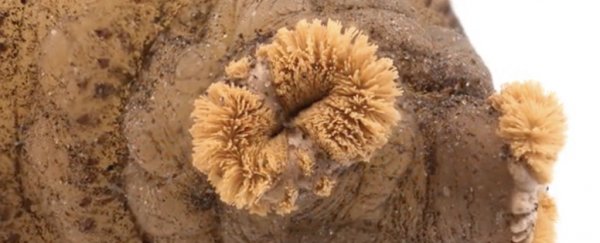When Piotr Naskrecki travelled to Belize in 2014, he found himself riddled with tiny parasites that had taken up residence under the surface of his skin.
Called human botflies (Dermatobia hominis), these tiny parasites had made their way inside him via fresh mozzie bites.
Botfly eggs are so small, they're actually laid on top of a mosquito, and when the mosquito is surrounded by a person's body heat as they feed, this causes the eggs to drop off and onto the flesh.
Once inside, the botfly larvae will grow fat inside the soft, protective layer of their new host.
When he realised what was going on, Naskrecki and did what anyone would do when faced with a parasitic insect baby - he carefully extracted it using a suction venom extractor.
Only then could he see the many rows of spines the tiny larva had developed in order to grip onto his insides.
But faced with two more baby botflies living inside him, Naskrecki then did what any brave scientist would do and let them continue their life cycle while documenting the whole process in this incredible film.
"It took two months for the larvae in my skin to reach the point where they were ready to emerge. The process took about 40 minutes," says Naskrecki in the video below.
"It was not particularly painful, in fact, I probably would have not noticed it if I had not been waiting for it, as the botfly larvae produce painkillers that make their presence as unnoticeable as possible."
It's not easy watching a queasy yellow maggot extract itself from Naskrecki's gaping wound, but it sure is fascinating.
And as US-based entomologist and photographer Alex Wild points out at his blog, Compound Eye, this is what nature documentaries should look like:
This sort of project is, I hope, the future of nature documentaries. Mainstream programming has descended into fear-mongering, clickbait, and outright fraud, but the widespread availability of video technology offers a modicum of salvation.
Rather than hoping against hope that cable television might occasionally regurgitate a worthwhile series, scientists now have the tools to tell their stories themselves. As Piotr's fly video shows, a real story about real nature, unembellished, can work.
You can read Naskrecki's thoughts on the whole experience at his website.
